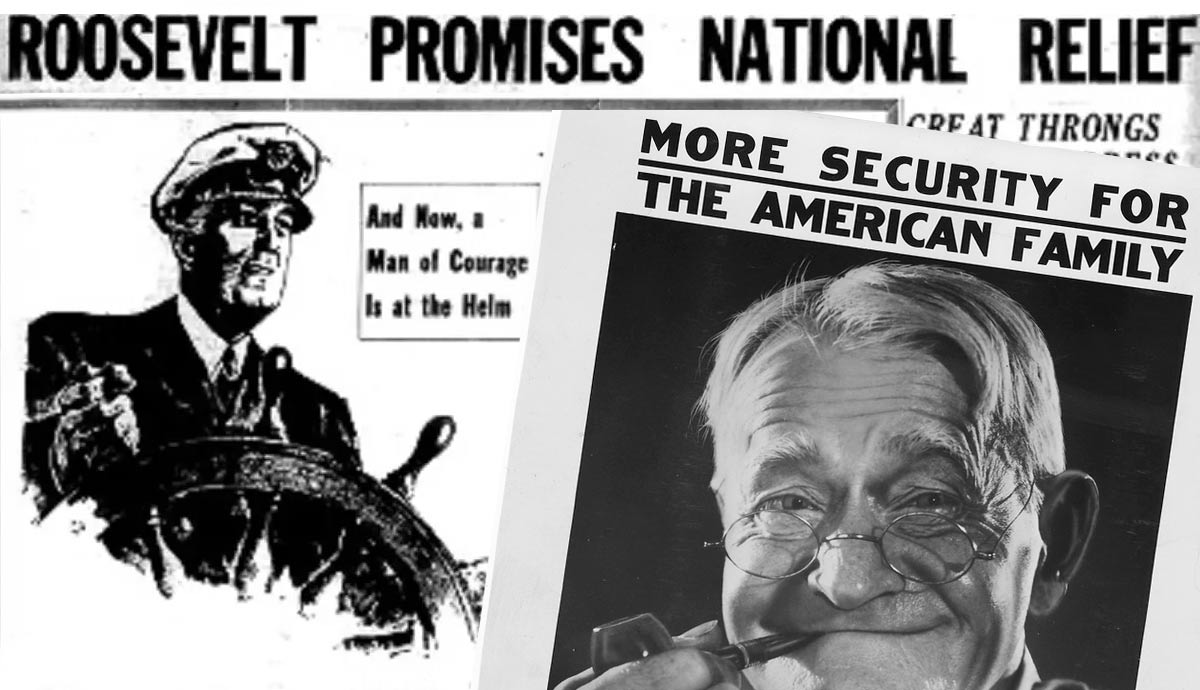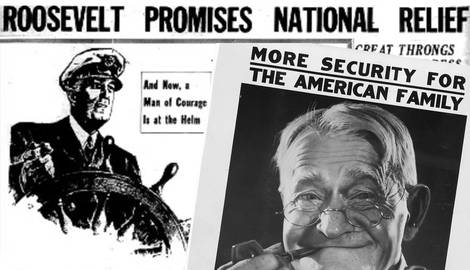
The New Deal was an extensive economic program implemented by President Franklin D. Roosevelt between 1933 and 1938 to combat the Great Depression. Roosevelt’s initiatives focused on the so-called “Three R’s”: reforming the financial system, providing relief for the unemployed and poor, and fostering the recovery of the economy. In practice, the New Deal comprised a broad array of legislation that targeted Wall Street excesses and regulated banks, strengthened workers’ and trade union rights, provided aid to the poor and disabled, boosted employment, and initiated widespread public works projects. Altogether, the New Deal served as a lifeline to pull American capitalism back from the brink of collapse.
Banking Reform

After millions lost their jobs as the Great Depression devastated the US economy, the US government turned its attention to banking regulation and financial reform. The exuberance of the “Roaring Twenties” came to an abrupt end after the 1929 Wall Street Crash, one of the most dramatic economic collapses in history. In October 1929, panic selling gripped the US stock market as tens of millions of shares were dumped. By 1932, the stock market had lost almost 90% of its value – the worst depression in living memory followed.
Public panic ensued as people rushed to withdraw their savings, only to find that their money had been lost – invested in the stock market. Many banks collapsed. In response a series of banking regulations launched under the New Deal, with the Glass-Stegall Act (1932) standing out as the most significant measure.

Sponsored by Senator Carter Glass and Representative Henry B. Stegall, the legislation separated commercial banking (issuance of credit to household firms) from investment banking (issuance of trading and securities). The aim of the separation of “Main Street” from “Wall Street” was twofold: to restore public confidence in securities trading and reduce the likelihood of future financial crises.
Relief For the Unemployed and Poor

By 1933, the national income of the United States had been cut in half, and over a quarter of the workforce (approximately 15 million people) were unemployed. The repercussions of economic collapse were felt nationwide.
In the South, 13 million bales of cotton remained unsold in 1932; food crops rotted in the fields, and millions of livestock were slaughtered; industrial and manufacturing output fell rapidly. While some rural areas faced less severe unemployment, they still suffered from plummeting agricultural prices.
In response to the crisis, various New Deal programs were launched. The Civilian Conservation Corps (CCC) offered voluntary work for unemployed, unmarried men aged between 18-25. The Federal Emergency Relief Administration (FERA) offered direct relief to the unemployed and poor through cash grants to states.

In 1935, the Social Security Act introduced retirement benefits for those over 65, unemployment insurance for those who had lost their jobs, and provisions for the blind and disabled.
Complementing these efforts, the Agricultural Adjustment Act (1933) offered financial assistance to farmers, the Home Owners Loan Corporation (1933), provided loans to stave off home foreclosures, and the National Industrial Recovery Act (1933), aimed to stimulate industrial growth and improve workers’ rights. Together, these New Deal initiatives expanded the social safety net and provided various kinds of relief to ordinary Americans.
Public Works

To boost the economy and provide jobs for Americans, the National Industrial Recovery Act authorized huge stimulus to the economy. A crucial part of this effort was the Public Works Administration (PWA).
The PWA played a major role in America’s economic recovery by organizing and providing funds for extensive public works projects, including constructing and upgrading airports, hospitals, schools, and government buildings, and primary infrastructure such as roads, bridges, and dams.
Between 1933 and 1935 the PWA spent over $3.3 billion and built over 35,500 projects across the United States. The most common projects were streets, highways, and schools. Notable large projects include the Bankhead Tunnel, Alabama, Los Angeles International Airport, Hoover Dam, San Fransisco Bay Bridge, and the Lincoln Tunnel in New York City. From 1935 to 1943, the PWA generated over 8 million jobs – it was instrumental in the success of the New Deal.

Simultaneously, the Works Progress Administration (WPA) – a parallel New Deal agency – initiated nationwide projects, ranging from the construction of roads, bridges, and schools, to public swimming pools, municipal buildings, playgrounds, and zoos. The express aim of the WPA was to put unemployed Americans back to work.
Additionally, the WPA’s Federal One project launched a series of projects to employ artists, musicians, actors, and writers on the premise that artists, like manual laborers, deserved employment during times of public need.










